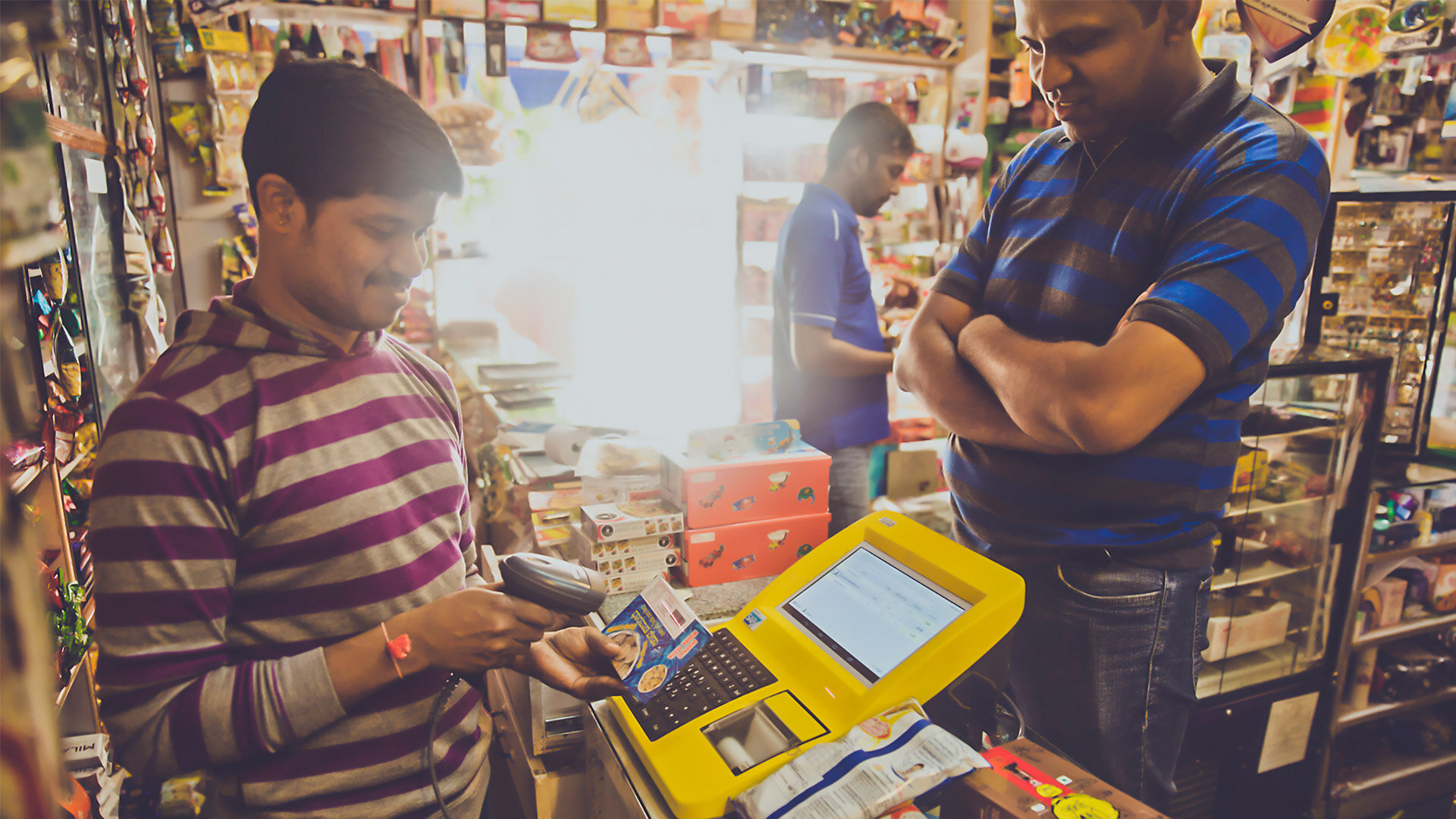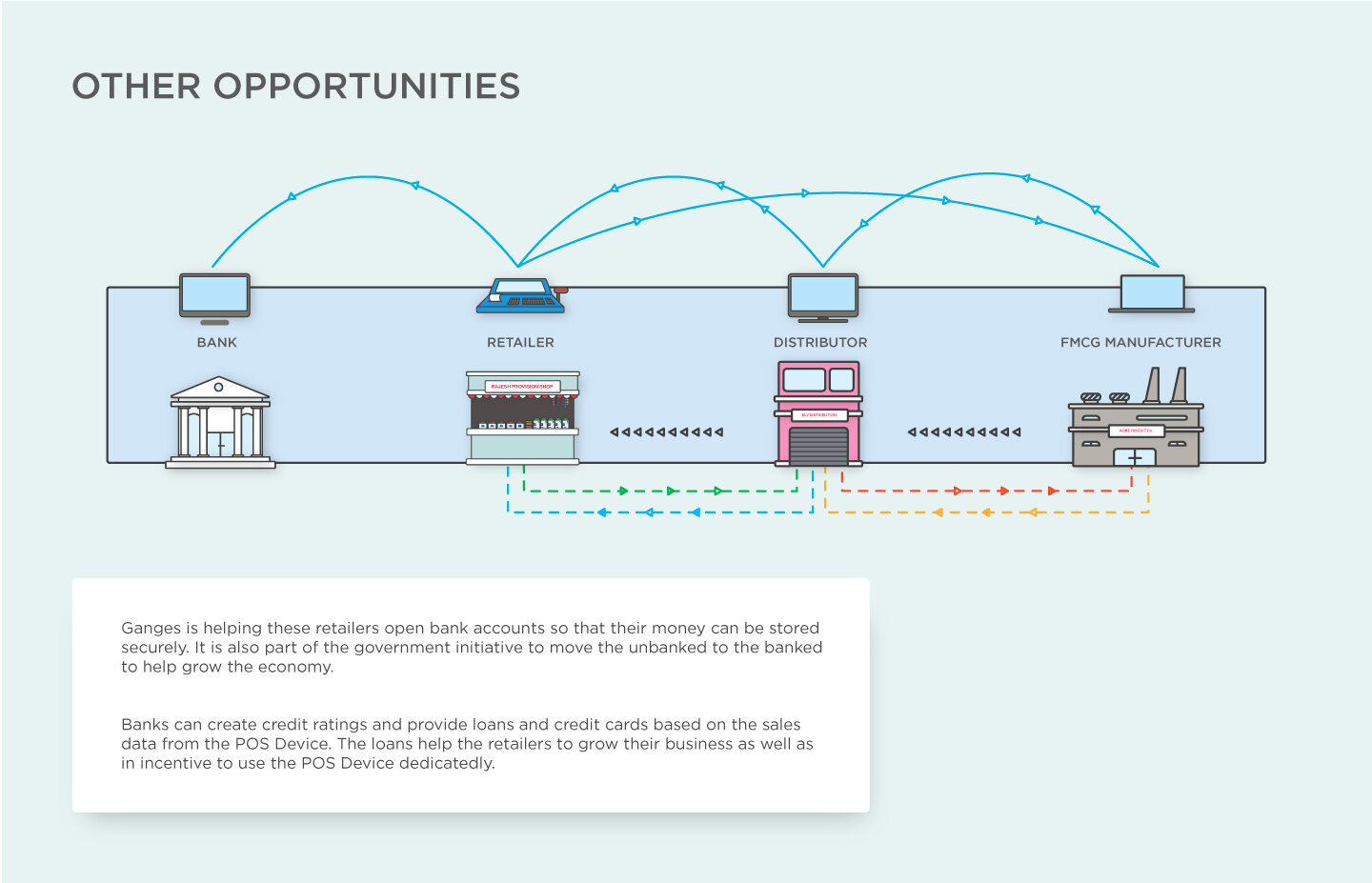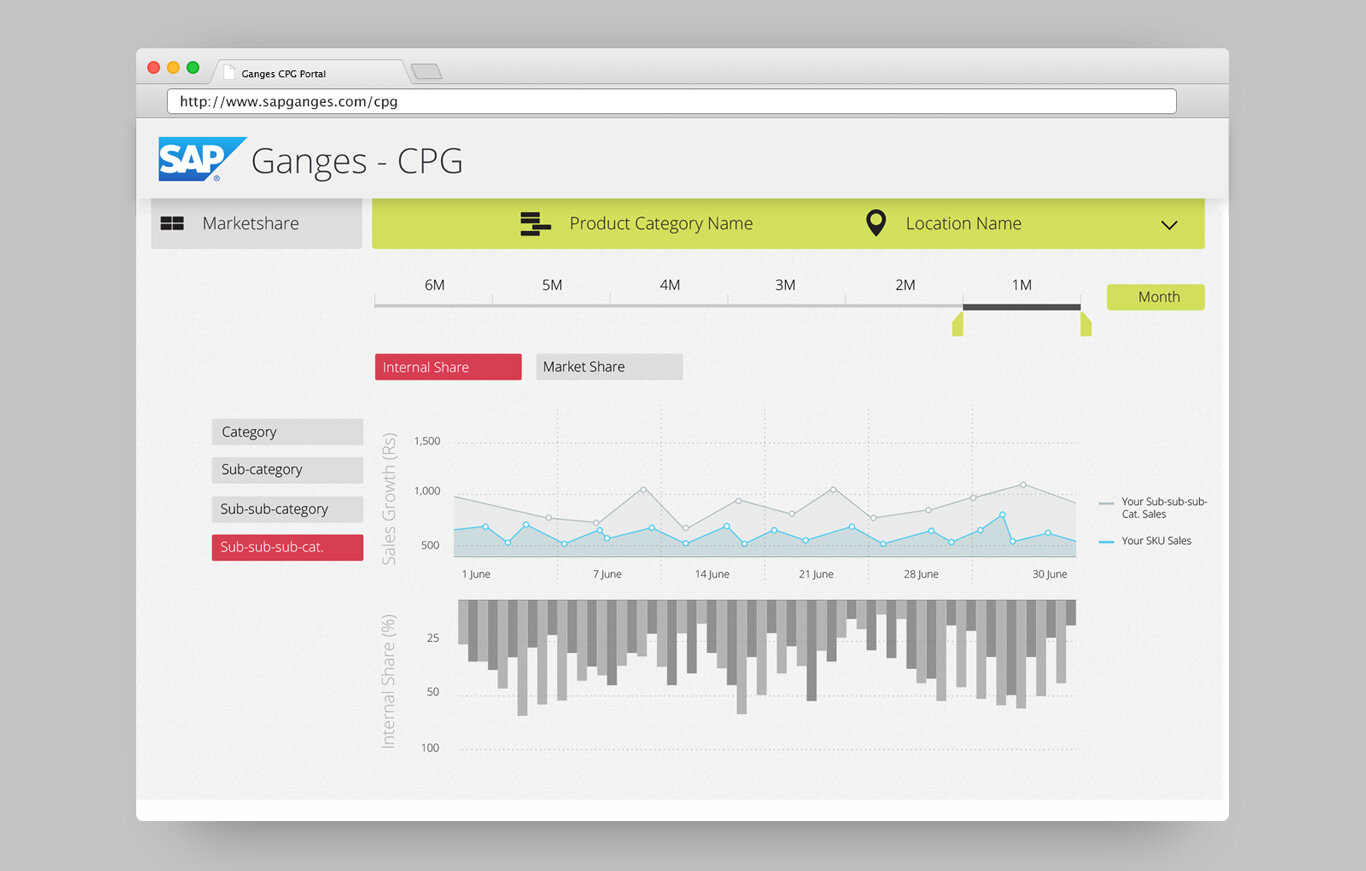
SAP Ganges
Designing disruptions in the retail supply chain
SAP Ganges
Designing disruptions
in the retail supply chain
2015

SAP Ganges is a retail network that optimises the Indian FMCG supply chain by bringing about transparency and timely delivery of information to stakeholders. SAP Ganges creates a healthy ecosystem driven by consumer demand resulting in smart and efficient production, that serves the daily needs of every Indian.
Context
Kirana stores comprise 94% of India’s retail sector. Their presence in every corner of the country helps them serve the daily needs of every Indian. This reach however, comes with inefficiency and miscommunication between manufacturers, distributors, and shop keepers resulting in numerous issues—most affected being the business of the Kirana store.
I carried out qualitative research, with 30 retailers, 5 distributors and 3 manufacturers, testing prototypes with them at every stage. I worked with SAP engineering and marketing teams to design and test their individual touchpoint experiences. I was also involved in designing the system, taking into consideration the different stakeholders including the network providers and hardware vendors.

The Ganges network is built around the last mile. It has also given rise to various other opportunities. One of them being banking. Since many retailers do not have bank accounts and since most of their business information is on paper, they cannot get loans from banks.

Better decisions through realtime analytics
The Consumer Packaged Goods(CPG) Portal provides manufacturers realtime analytics on sales data, promotion effectiveness, marketshare of products, monthly sales trends, stock out predictions and more. This data can be seen from a country level to a store level, to take strategic and tactical decisions. The Distributor Portal allows distributors to categorise retailers, receive purchase orders from them and maintain Payments received, credit owed etc.
Point of Sale Device
The POS application was designed to be simple for retailers to use. By observing supermarket checkout counters, we designed interactions to be quick and repetitive for easy recall, allowing them to learn task flows quickly. The iconography was designed specifically to be familiar to them, and even had familiar features like customer credit. The onboarding process of the Devices was a 5 step process, making installation a simple task.
While working with retailers, we noticed that their assistants were semi literate and found it difficult to adjust to the QWERTY Keyboard, but could recite and follow the linear alphabet much better. So we designed the POS with an ABC Keyboard, which allowed them to find keys much faster, i by improving task completion by almost 40%
Team:
Sajid Saiyed
Rakesh Rai
Neelakanthan Padhamanabhan
Abhijit De
Ganges development team
Awards & Media
IXDA 2015—Shortlisted
Open Innovation Awards 2014, Zeppelin University
World CSR Congress 2014—Best Innovation Product or Service
ASSOCHAM Innovation Excellence Awards 2014—Retail
The Times of India
The Economic Times
First Post

















